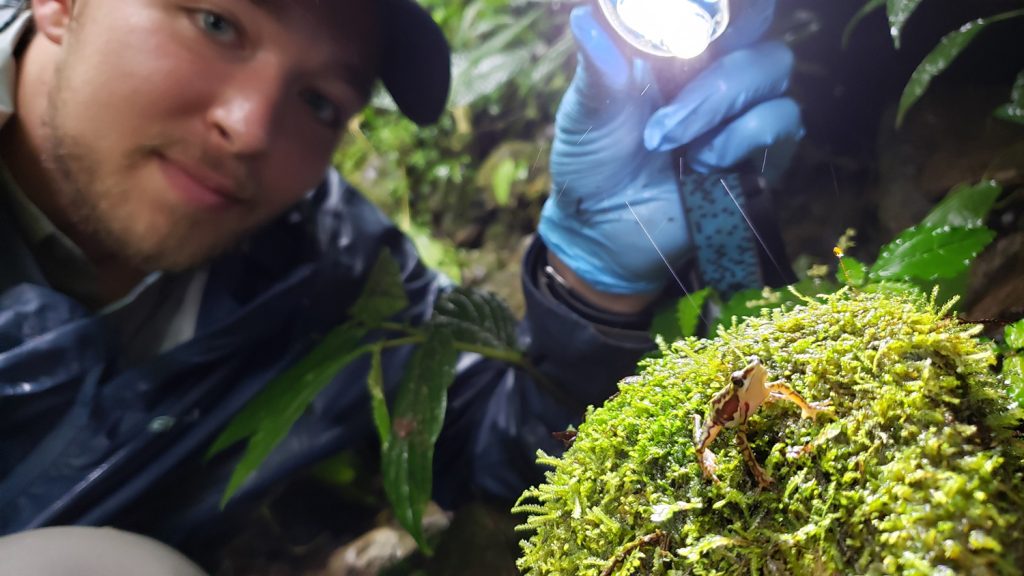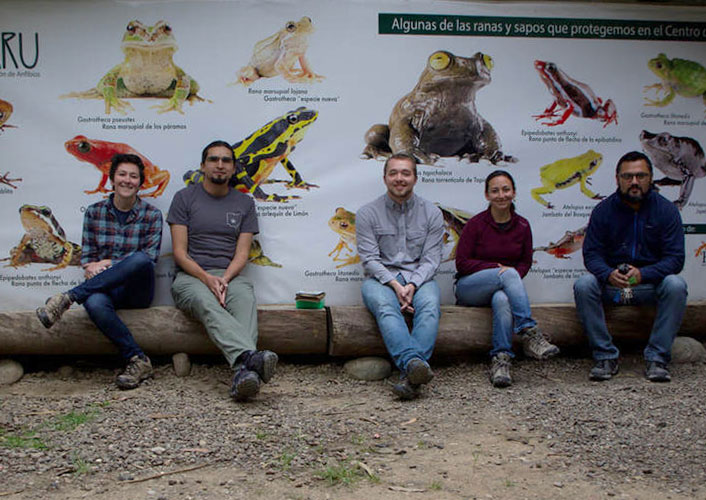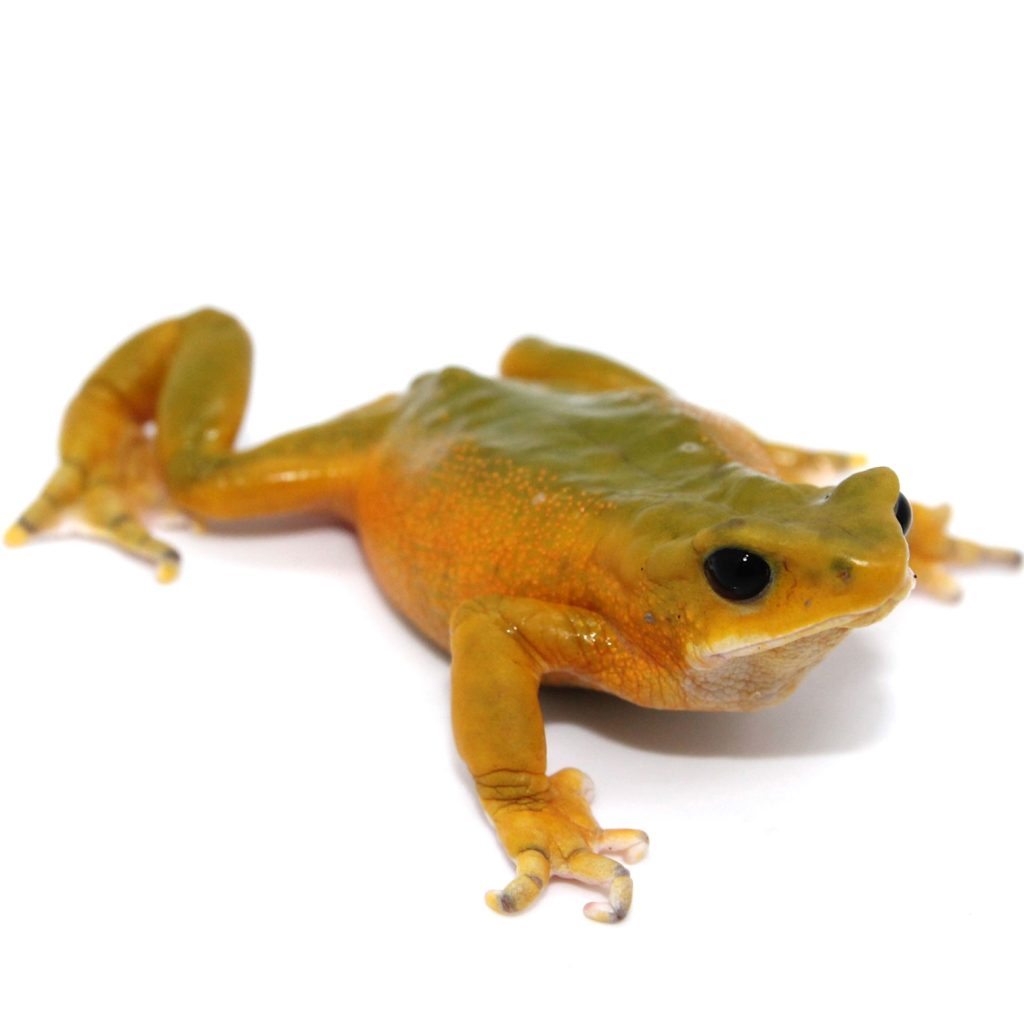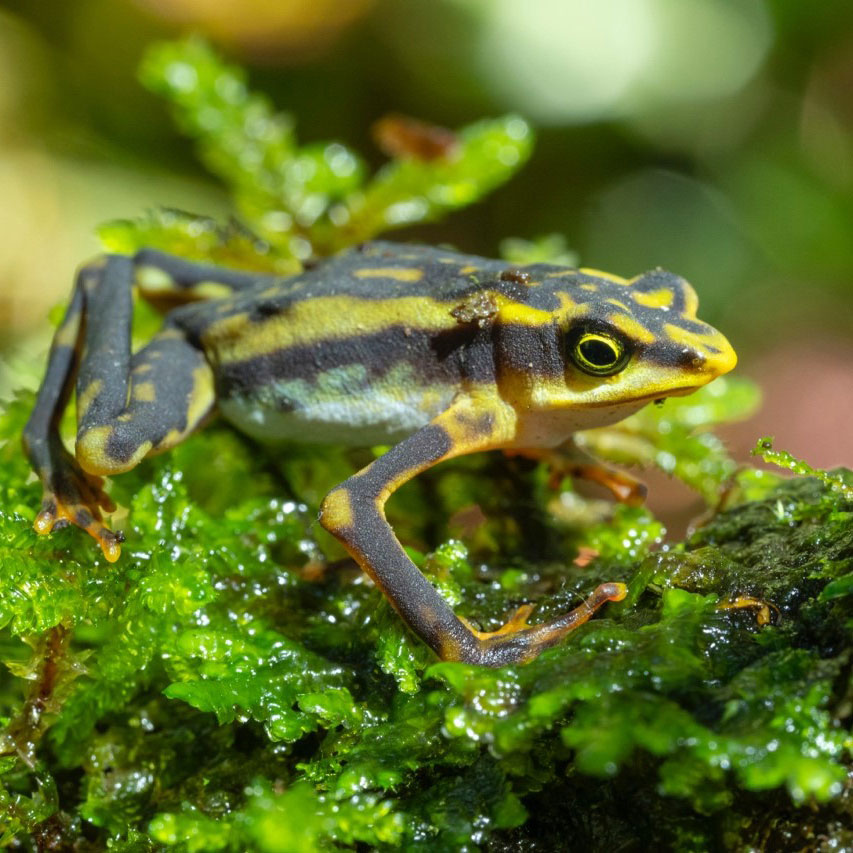Findings from new research conducted by W.K. Kellogg Biological Station researchers in partnership with scientists and communities in Ecuador stand in contrast to the increasingly frequent news about species extinctions—showing that numerous species of harlequin toads thought to be lost are still surviving in the wild.
Kyle Jaynes is a Michigan State University doctoral student in the Department of Integrative Biology and the Ecology, Evolution and Behavior Program; a member of Dr. Sarah Fitzpatrick’s lab at KBS; and the lead author of the new study, which was published in the journal Biological Conservation.
The research team’s work focused on harlequin frogs, which have been hard-hit by Batrachochytrium dendrobatidis, or Bd—a fungus that has affected amphibians broadly. It’s been estimated that more than 80% of harlequin frog species may have gone extinct because of Bd. Encouragingly, as the study shows, in the last decade about a third of those species have been rediscovered throughout Central and South America.

The study
In 2019, Jaynes won a grant from the National Geographic Society, in part to bring together disparate reports of sightings of frogs long-considered extinct, providing a more complete account on the status of these frogs. Now, he, Fitzpatrick and their colleagues in Ecuador have done that.
“In total, 87 species have been missing,” Jaynes said. “To date, 32 of those once-missing species—that’s 37 percent—have been rediscovered over the last two decades. This is a shocking number.”
Jaynes and Fitzpatrick also traveled to five different sites in Ecuador to look for rediscovered frogs across a range of habitats. When they’d find one, the team would collect saliva samples for genetic studies and swab each frog’s skin to look at which microbes—including the lethal Bd—were living there.
Through examining that DNA, the team gleaned information about the genetic diversity of the frogs. They found differences between the species that had not been seen for longer versus shorter periods of time—observations that could be useful in developing strategies to conserve and protect rediscovered species.
Joining forces to understand ‘culturally iconic’ frogs
In addition to Jaynes and Fitzpatrick, the research team included:
- Luis Coloma and Andrea Terán-Valdez of the Jambatu Center for the Investigation and Conservation of Amphibians
- Mónica Páez-Vacas and David Salazar-Valenzuela of the Universidad Tecnológica Indoamérica (Indo-American Technological University)
- Juan Guayasamin of the Universidad San Francisco de Quito (San Francisco University of Quito)
- Fausto Siavichay of the Amaru Zoológico Bioparque (Amaru Zoological Biopark)

Invaluable contributions have also come from outside the realm of professional research and conservation. The team worked with local communities in Ecuador—including Indigenous communities—that treasure the frogs.
For example, one of the challenges in accurately classifying a species as rediscovered or returned from extinction was proving it was lost in the first place. For some species, like the starry night harlequin frog that researchers thought was extinct, addressing that challenge was a matter of knowing who to talk to.
“It was only missing to scientists,” Jaynes said. “It was never missing to Indigenous people. They were protecting it.”
“These frogs are gems. It’s not just nerdy scientists who think they are important,” Fitzpatrick added. “They’re culturally iconic.”
While the rediscovery of species thought to be extinct certainly is exciting, it also highlights work yet to be done.
“Rediscovery does not equal recovery,” Jaynes said. “This story isn’t over for these frogs, and we’re not where we want to be in terms of conservation and protection. We still have a lot to learn and a lot to do.”
Related articles
Some harlequin frogs — presumed extinct — have been rediscovered | Nov. 11, 2022
Colorful frogs downed by disease are making a surprising comeback | Nov. 8, 2022
Up to 32 frog species thought to be extinct may not be, new research shows | Nov. 8, 2022



A legacy of conservation; a commitment to sustainability.
3700 E. Gull Lake Drive
Hickory Corners, MI 49060
(269) 671-5117
info@kbs.msu.edu